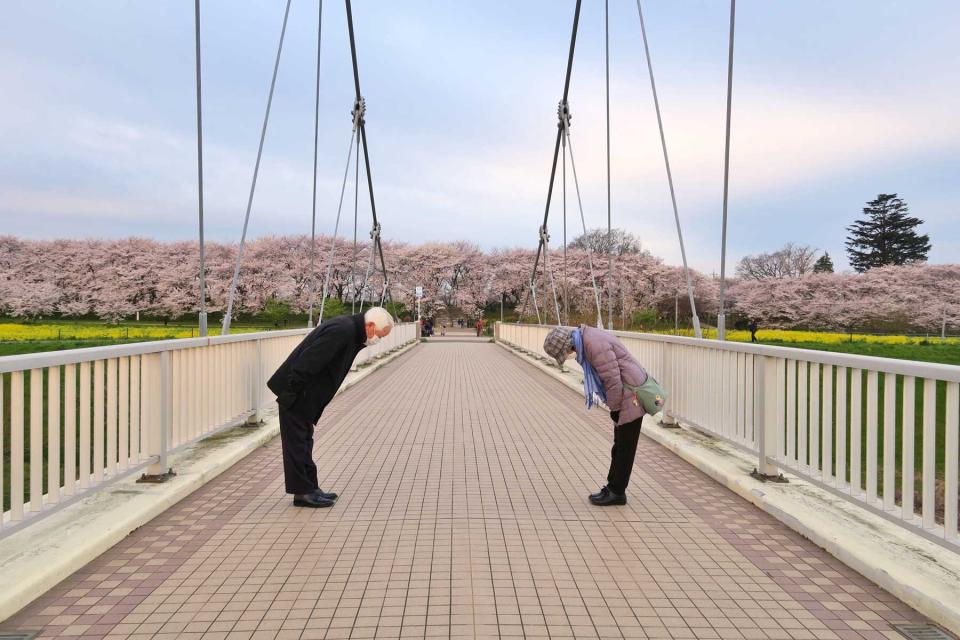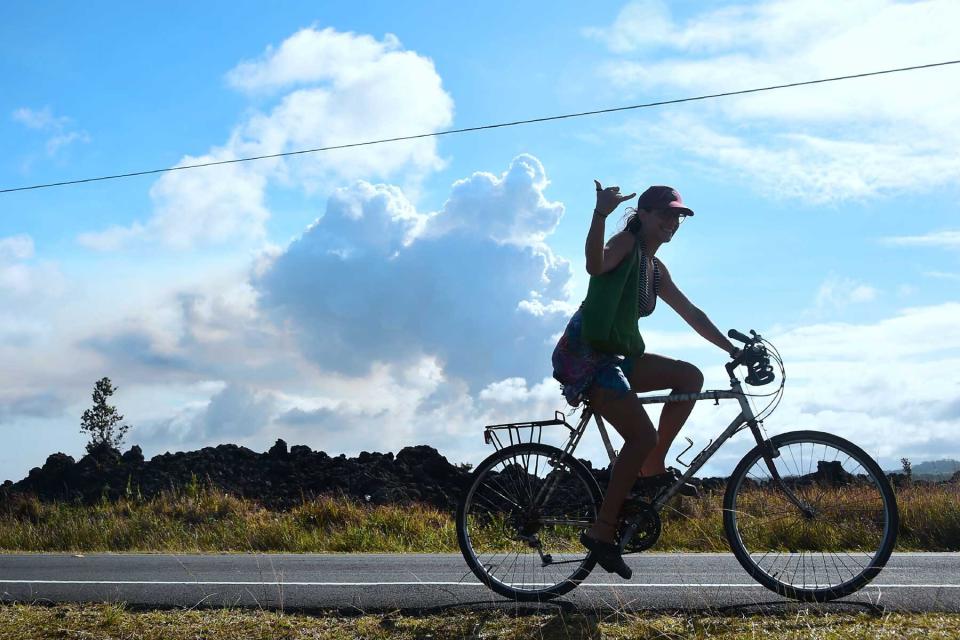6 Distance-friendly, No-touch Greetings Used Around the World (Video)

Last week I ran into a friend I hadn't seen in a few weeks outside our local wine shop. Without thinking, I moved to hug her but stopped before I did. We looked at each other, shaking our heads with sad smiles before holding out our arms in a big, mutual air hug.
Over the past few months, a global effort to eradicate novel coronavirus has put our country's culture of handshakes and high-fives on indefinite hiatus. The elbow bump served as a temporary stand-in, but as it became clear that we needed to keep a minimum of six-feet between ourselves and others, we've had to become more creative.
Depictions of human beings clasping hands have appeared since ancient times with stone reliefs, Grecian gravestones, and Roman coins all portraying images of people sharing a handshake. Historians believe that the gesture originated as a show of peace — offering your hand to a stranger proved that you carried no weapons and therefore meant no harm. In the 1600s, the Quakers introduced the handshake as an expression of equality at their meetings. These days the practice has become so ingrained in western culture that we shake hands — or hug or kiss one another — almost as a reflex. Not doing so feels incredibly strange.
It hasn't been an easy adjustment for most Americans (especially huggers like me!) but foregoing these physical interactions is crucial to slowing the virus' spread. For much of humanity, however, no-touch salutations are the norm.
As we come up with new ways to say hello that meet social distancing guidelines, we can draw inspiration from other cultures. These heartfelt greetings from around the globe deliver a warm, risk-free welcome — and may just be the way of the future.

Getty Images
Bow
Bowing in Japan is believed to have originated with the introduction of Buddhism from China between the sixth and eight centuries. At that time, bowing was a reflection of social status — if you met someone of a higher standing you were expected to bow, making yourself shorter as a sign of deference. In modern Japan, bowing serves a variety of functions and today people bow to say thank you or apologize, to mark the beginning or ending of a ceremony or meeting, and, of course, in greeting. A bow can convey different meanings depending on one's posture: the deeper the bow, the more respect that is being shown.
Stick Out Your Tongue
In western culture, sticking out your tongue at someone is considered impolite and insulting. Just imagine an obnoxious child teasing another on the playground shouting, "nyah nyah!" But in Tibet, the gesture hearkens back to the ninth century and a mean, black-tongued king named Lang Darma. As Buddhists, Tibetans believe in reincarnation and after Darma's death by assassination it was feared the cruel king would return. For centuries, Tibetans have stuck out their own tongues in greeting as a way to prove that they were not Darma incarnate. The expression is also a way to show agreement and respect.

FREDERIC J. BROWN/AFP via Getty Images
Shaka
From surfers to cab drivers, news anchors, grandparents, and keiki (children), the shaka is a universal greeting in the Hawaiian Islands. To make a shaka, frequently recognized as the symbol that means, "hang loose," extend your thumb and pinky finger while curling your three middle fingers toward your palm. The gesture, often expressed with an enthusiastic exclamation of, "shaka, brah!" is said to date back to the early 1900s when a sugar mill worker got his hand caught in the rollers, crushing his middle, index, and ring fingers. After the accident, he became the plantation's security guard and waved his maimed hand to shoo local kids away when they tried to jump the trains at Kahuka Station. The kids replicated the gesture to signal that the guard was not around and the coast was clear. These days, the shaka is a simple way to greet someone with a bit of aloha spirit.
Namaste
Throughout Southeast Asia from India, to Bangladesh, to Nepal, people press their palms together at their heart centers and bow their heads slightly in salutation. This gesture, called anjali mudra, is customarily accompanied by the word namaste, a Sanskrit term that translates to, "I bow to you." Although in western culture many people are familiar with the gesture as a way to seal a yoga practice, it's important to remember that namaste is a spiritual act, one that signifies respect and gratitude while saying, "the Divine in me bows to the Divine in you."

Getty Images
The Wai
Similarly, in Thailand people greet one another with a gesture known as the wai. Like namaste, the wai entails bringing the hands together in prayer at the center of the chest and bowing the head. Beyond its use in both greeting and parting, the wai also acts as an apology, a way to express thanks, or a show of respect for an elder — the higher up your thumbs touch, whether they're placed on your chest, chin, nose, or forehead — the more respect you show.
Place your hand on your heart
Throughout the Nation of Islam, Muslims use the Arabic phrase as-salaam alaikum, which translates to "peace be upon you," in greeting. While the accompanying gestures vary from place to place, putting the right hand to the heart demonstrates a genuine happiness to meet someone.